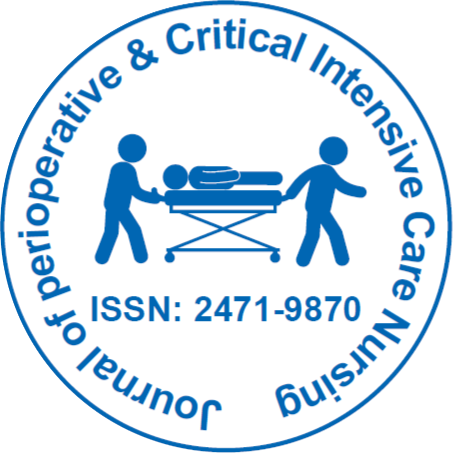
Journal of Perioperative & Critical Intensive Care Nursing
Open Access
ISSN: 2471-9870
+44-77-2385-9429

ISSN: 2471-9870
+44-77-2385-9429
Opinion Article - (2024)Volume 10, Issue 2
Patient safety stands as a important concern within healthcare systems worldwide, reflecting a commitment to safeguarding patient well-being throughout the continuum of care. This article discusses about the multifaceted aspects of patient safety, analysing its significance, challenges, strategies, and future directions in promoting a safer healthcare environment. Patient safety encompasses efforts to prevent harm to patients through the reduction and mitigation of risks, errors, and adverse events in healthcare settings. It is rooted in the ethical principle of non-maleficence-doing no harm-and is fundamental to delivering high-quality, compassionate care. Ensuring patient safety not only enhances clinical outcomes but also encourage trust between healthcare providers and patients, essential for effective healthcare delivery.
Challenges in ensuring patient safety
Despite ongoing advancements, challenges persist in achieving optimal patient safety. Medical Errors and Adverse Events in diagnosis, treatment, medication administration, and surgical procedures can lead to patient harm. Healthcare-Associated Infections (HAIs) infections acquired during hospitalization due to inadequate infection control measures pose significant risks to patient safety. Communication breakdowns ineffective communication among healthcare team members, patients, and caregivers can contribute to errors and adverse outcomes. Engaging patients in their care and promoting shared decision-making are important for improving safety outcomes. Resource constraints limited resources, staffing shortages, and financial pressures may impact patient safety initiatives. Efforts to address these challenges include enhancing training and education for healthcare professionals, implementing robust quality improvement programs, and leveraging technology to streamline processes and reduce errors. Promoting a culture of transparency and accountability within healthcare institutions is need to encourage open communication and learn from mistakes. Additionally, advocating for policies that prioritize patient safety and allocate sufficient resources to support these initiatives is important for sustained improvement in healthcare outcomes.
Strategies for enhancing patient safety
Healthcare organizations employ various strategies to enhance patient safety for clinical protocols and guidelines standardizing protocols for procedures, medication administration, and infection control reduces variability and enhances safety. Health Information Technology (HIT) Electronic Health Records (EHRs), Bar Code Medication Administration (BCMA), and decision support systems improve accuracy and reduce errors. Team collaboration Promoting a culture of safety where all team members feel empowered to speak up and report concerns encourage a safer environment. Education and training Continuous education on safety practices, including simulation-based training and drills, enhances competency and preparedness. Quality improvement initiatives regular audits, root cause analyses of adverse events, and feedback mechanisms drive continuous improvement in patient safety practices.
Future directions in patient safety
The future of patient safety is shaped by advancements in technology, data analytics, and interdisciplinary collaboration. Artificial Intelligence (AI) applications in predictive analytics, early warning systems, and decision support hold potential vivo for preemptive identification of risks. Patient-Centered Care tailoring care plans to individual patient needs and preferences promotes safety and reduces disparities in healthcare delivery. International initiatives and sharing of best practices across healthcare systems enhance learning and improvement efforts. Encouraging a culture where patient safety is prioritized at all levels of healthcare organizations ensures sustained improvements.
Patient safety is not merely a goal but a foundational principle in modern healthcare. By addressing challenges, implementing evidence-based strategies, and embracing technological advancements, healthcare providers can continue to advance patient safety initiatives. Ultimately, ensuring patient safety requires a collective commitment-from policymakers and healthcare leaders to frontline providers and patients themselves-to create a safer and more reliable healthcare environment for all.
Citation: Li G (2024) Patient Safety in Healthcare Systems: A Collaborative Approach for Future Healthcare. J Perioper Crit Intensive Care Nurs. 10:249.
Received: 09-May-2024, Manuscript No. JPCIC-24-32825; Editor assigned: 13-May-2024, Pre QC No. JPCIC-24-32825 (PQ); Reviewed: 27-May-2024, QC No. JPCIC-24-32825; Revised: 03-Jun-2024, Manuscript No. JPCIC-24-32825 (R); Published: 10-Jun-2024 , DOI: 10.35248/2471-9870.24.10.249
Copyright: © 2024 Li G. This is an open-access article distributed under the terms of the Creative Commons Attribution License, which permits unrestricted use, distribution, and reproduction in any medium, provided the original author and source are credited.